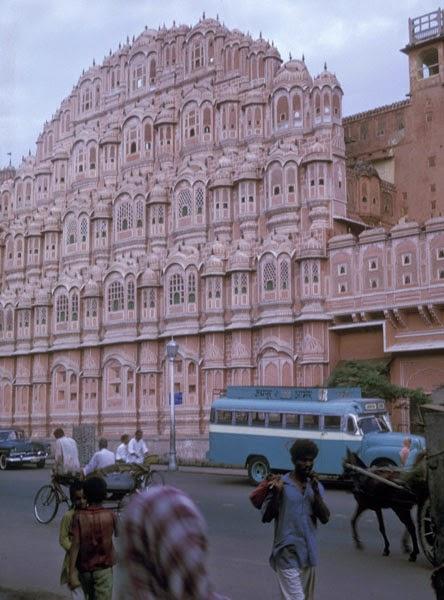
Hawa Mahal, Jaipur, India
The following is an excerpt from the memoir of Carolyn T. Arnold, my husband’s aunt, who traveled to India in the 1960s.Jaipur, the third point of India’s “Golden Triangle” (Delhi, Agra, Jaipur), is India’s most colorful city, rich in palaces from another age, festivals, and handicrafts. The foundations were laid in 1727. In ancient times under the rule of the Moghuls, the capital was built on a high rock-bound stronghold called Amber. Today, the landmark of Jaipur is the Hawa Mahal, the Palace of the Winds. It stands on one of the main streets and is elaborate with fanciful honeycomb designs. Built of rich pink sandstone, it is five stories high with octagonal overhanging windows, each with a perforated screen from which the ladies of the palace could watch the activities below.
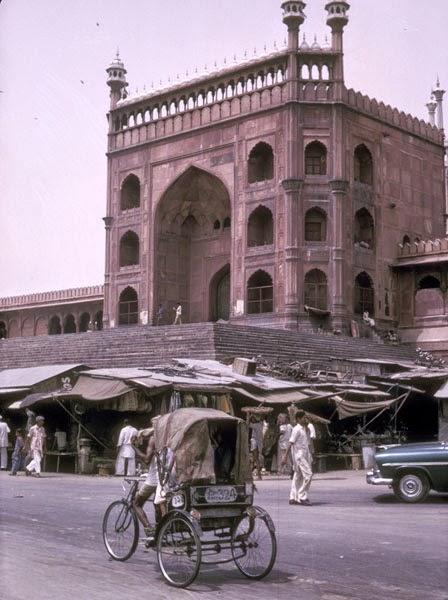
Rickshaw, Jaipur, India
There is also the City Palace, now a museum containing rare manuscripts and other artifacts. The late Maharajah, who was incapable in old age of climbing steps, built ramps in many parts of the Palace so he could be pushed up in his rickshaw.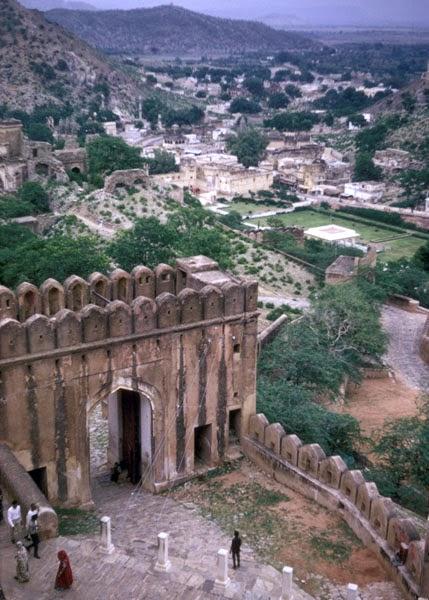
Amber Palace, near Jaipur, India
Amber Palace, built in the 17th century, stands about seven miles from the city of Jaipur. Now it is deserted and surrounded by high ramparts. The principal hall, known as the Hall of Victory, contains much decorative art such as panels of alabaster with fine inlaid work. The Palace also contains the world’s best Chamber of Mirrors.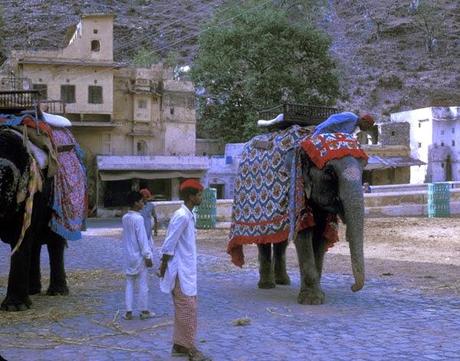
Elephant with Howdah
The approach to the courtyard on the lower terrace is through a great arched gate. Most visitors make the ascent to Amber on board a gaily decorated elephant, and so did we. Seated in a howdah, an open box-like structure high on the elephant’s back, we swayed to the lumbering rhythm of the monster, while the mahout (driver) sat on the elephant’s head between its flapping ears.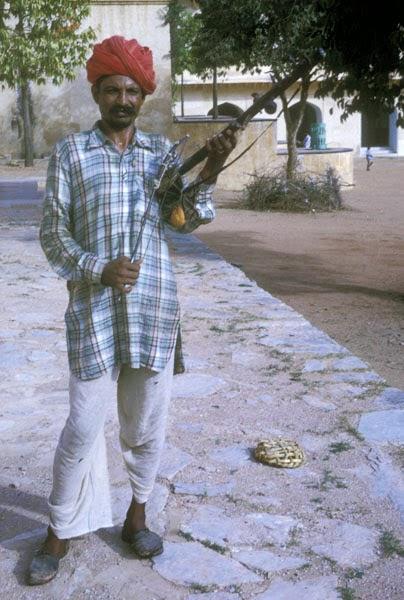
Musician
We rode a mile up to the Fort, accompanied by the music of a dark, wizened old man playing a three-stringed instrument. A simple tune was repeated over and over again as he walked beside the elephant all the way up the hill, grinning delightedly as we gave him a few coins.Dismounting at the gateway, the guide bought admittance tickets for us. As he did so, he removed his leather belt from his trousers and checked it. I was reminded again of the sacred cow—that even a leather belt was not acceptable in many places.In Jaipur we stayed at the Rambaugh Palace—a real one which is now used as a hotel. Some of the old Maharajah’s family still lives in one section. All the marble and huge rooms could not make up for the lack of air-conditioning, although a noisy fan in the window stirred up the hot air!
Perhaps the original intrepid tourist was Carolyn T. Arnold, my husband’s aunt. A single school teacher in Des Moines, Iowa, she began traveling abroad when she was in her forties, beginning with a bicycling trip through Ireland in 1952. She went on from there to spend a year as a Fulbright Exchange Teacher in Wales, to more trips to Europe and beyond, and eventually became a tour leader, taking all her nieces and nephews (including Art) on her travels. When she retired from teaching, she wrote of her experiences in a memoir called Up and Down and Around the World with Carrie. Today, as I read of her travels, I marvel at her spirit of adventure at a time when women did not have the independence they do today. You can read of some of her other adventures in these posts on this blog: October 21, 2013; October 7, 2013; July 29, 2013.March 10, 2014.
